Table of Contents
ToggleIn a world where data floats through the ether like cotton candy at a carnival, cloud computing has become the lifeline for businesses and tech enthusiasts alike. But navigating this fluffy realm can feel like trying to find a needle in a haystack—if the haystack was made of code and the needle was a well-structured database. That’s where cloud computing books come into play, serving as trusty guides to help readers soar above the clouds and avoid the pitfalls below.
Best Cloud Computing Books for Beginners
Cloud computing books provide essential knowledge for those starting in this evolving field. These resources cover foundational concepts and practical applications.
Must-Read Titles
“Cloud Computing: Concepts, Technology & Architecture” by Thomas Erl stands out for its comprehensive approach to the principles of cloud computing. “The Big Switch” by Nicholas Carr offers an engaging narrative on the transition to cloud technology. “Architecting the Cloud” by Michael J. Kavis focuses on designing cloud solutions effectively. “Cloud Computing for Dummies” simplifies complex ideas, making it accessible for novices. Each title equips readers with diverse perspectives and essential skills.
Key Concepts Covered
Books on cloud computing explore critical areas such as service models, deployment strategies, and security considerations. Readers encounter detailed explanations of Infrastructure as a Service (IaaS) and Software as a Service (SaaS), crucial for grasping cloud functionalities. Deployment methods, such as public, private, and hybrid clouds, get thorough treatment, assisting beginners in navigating options. Security implications also receive significant attention, addressing concerns surrounding data protection and compliance. These concepts collectively strengthen understanding and foster confidence in cloud computing practices.
Advanced Cloud Computing Books

Advanced cloud computing books are indispensable for professionals looking to deepen their knowledge. These titles delve into complex topics, offering insights that enhance expertise.
In-Depth Resources
“Infrastructure as Code” by Kief Morris explores managing cloud infrastructure through code practices. This book promotes consistency and efficiency in deployment operations. “Cloud Native Patterns” by Cornelia Davis introduces advanced design patterns, emphasizing microservices and containerization. It provides valuable frameworks for creating scalable applications. “Designing Data-Intensive Applications” by Martin Kleppmann addresses challenges related to data management in the cloud. Each resource features comprehensive examples and detailed case studies, making them essential for mastering advanced concepts.
Author Insights
Authors of advanced cloud computing books bring immense knowledge and experience to their works. Kief Morris’s background in software engineering offers practical insights into infrastructure management. Cornelia Davis, with her expertise in cloud-native development, shares innovative strategies for application design. Martin Kleppmann’s experience in distributed systems enhances the understanding of complex data challenges. Their combined perspectives provide readers with real-world applicability and rich, engaging content. Each book represents a culmination of research that readers can leverage to navigate the intricacies of cloud computing effectively.
Notable Authors in Cloud Computing
Many authors have significantly impacted cloud computing, shaping resources that benefit readers at various skill levels. Each writer brings unique insights to the field, contributing to its evolution.
Profiles of Influential Writers
Thomas Erl stands out as a leading figure in cloud computing literature. Known for his comprehensive works, he focuses on architecture and cloud service models. Nicholas Carr, another influential author, explores the connection between technology and business strategy. Michael J. Kavis brings a wealth of experience in enterprise architecture, guiding professionals through cloud complexities. Other noteworthy writers include Kief Morris, who specializes in Infrastructure as Code, and Cornelia Davis, who discusses cloud-native approaches. Martin Kleppmann enhances the conversation by incorporating data-intensive applications into cloud discussions.
Their Contributions to the Field
Thomas Erl’s books clarify complex cloud concepts, making them accessible to beginners and professionals alike. Nicholas Carr’s perspectives provoke thought on the broader implications of cloud adoption in business. Michael J. Kavis emphasizes practical architecture solutions that align with organizational goals. Kief Morris introduces Infrastructure as Code, promoting efficient cloud management techniques. Cornelia Davis advocates for cloud-native patterns, encouraging innovative development practices. Martin Kleppmann’s focus on data-intensive applications adds depth to cloud computing literature, highlighting real-world challenges and solutions. Together, these authors create a robust framework for understanding and leveraging cloud technologies.
Trends in Cloud Computing Literature
Cloud computing literature continues to evolve rapidly, revealing new trends that shape the understanding of this technology. Literature highlights topics integral to innovation and efficiency that resonate with both beginners and seasoned professionals.
Emerging Topics
In recent years, authors have shifted focus toward emerging topics like edge computing and serverless architecture. Edge computing brings data processing closer to the source, reducing latency and improving performance. Serverless architecture, on the other hand, allows developers to build and run applications without managing servers, streamlining deployment. Other noteworthy subjects include artificial intelligence integration, which enhances cloud services, and multi-cloud strategies, enabling businesses to leverage multiple providers. These trends indicate a movement toward more scalable and dynamic approaches to cloud computing, as new resources address the need for improved flexibility and efficiency.
Future Directions
Future directions in cloud computing literature emphasize the importance of security and compliance. Cybersecurity remains a critical concern for businesses moving to the cloud, leading to a rise in resources that explore advanced security measures. Another anticipated area of focus is the development of quantum computing, which promises to revolutionize cloud capabilities. The literature will likely explore how organizations can incorporate quantum solutions to enhance data processing and analytical power. Sustainability will also take center stage, with authors discussing how cloud services can align with environmental goals and support greener technology initiatives. Overall, these future directions reflect a proactive approach to overcoming challenges and optimizing cloud strategies, ensuring relevant content for an evolving landscape.
Cloud computing books serve as invaluable resources for anyone looking to navigate this complex landscape. They not only simplify intricate concepts but also empower readers to harness the full potential of cloud technologies. With a wealth of knowledge available from both beginner and advanced titles, individuals can build a strong foundation or deepen their expertise.
As the field continues to evolve, staying updated through these literary resources becomes essential. The insights provided by renowned authors help professionals tackle emerging trends and challenges effectively. Embracing these books will equip readers with the skills and confidence needed to thrive in the ever-changing world of cloud computing.




